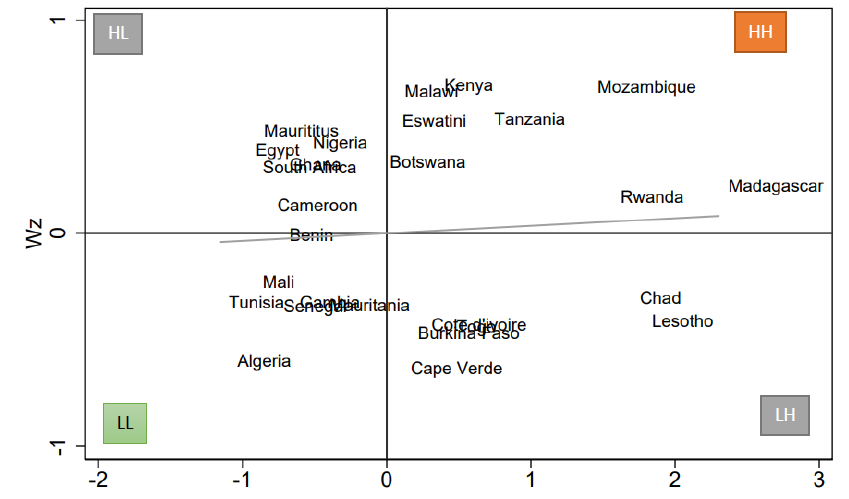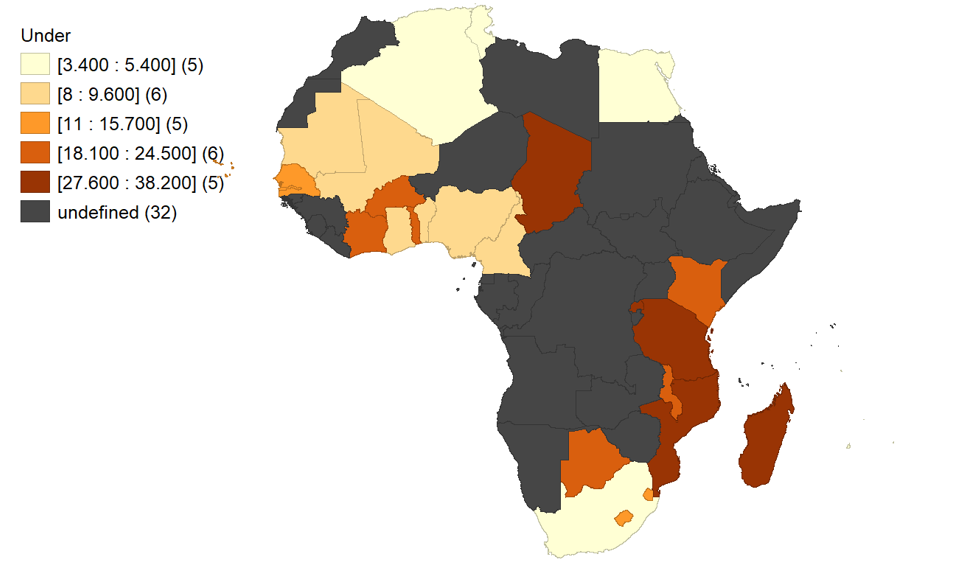Quantifying the spillover effect of agricultural productivity and macroeconomic variables on nutrition outcomes in selected African countries
Conference
64th ISI World Statistics Congress - Ottawa, Canada
Format: CPS Paper
Keywords: "spatial, agricultural, dynamic-linear-regression, malnutrition, spatialdurbinmodel
Abstract
Reduced food production, hunger, and malnutrition remain enormous challenges for African economies. These problems have been exacerbated by a rising trend in population density, which has occurred in the absence of increases in agricultural productivity. While international forums have emphasized the importance of agricultural productivity in alleviating hunger and malnutrition through increased on-farm income and market participation, the positive effects of agriculture and macroeconomic policies on malnutrition reduction are not well understood. This study used geo-epidemiological and econometric tools to identify African countries at risk of malnutrition (hotspots), and a dynamic spatial Durbin model to assess the direction and magnitude of the direct and spillover effects of agricultural productivity and macroeconomic variables on malnutrition in selected African countries. It illuminates whether increased agricultural productivity and sound macroeconomic policies result in improved nutritional outcomes. The study discovered clear evidence of clustering in the prevalence of undernourishment in African countries, with 29.6% and 25.9%, respectively, in the hotspot and coldspot zones. Furthermore, the study found evidence of local and global spillover effects of agricultural value added, economic growth, and financial development on the prevalence of undernourishment in the African population, both directly and indirectly.
Our findings indicate that agriculture's positive effect on nutritional outcomes is not consistent across countries, and that nutritional improvements are likely to occur only in countries trapped in low agricultural productivity traps. Agriculture productivity has a less visible positive effect over time. Furthermore, macroeconomic factors such as GDP per capita, financial development, trade openness, and individual internet access all have a significant impact on malnutrition. Population growth, as expected, puts additional strain on nutritional outcomes. As part of the recommendation, subsistence farmers’ access to credit and microfinance to grow crops rich in micronutrients should be enhanced. This will boost household nutrition outcomes as opposed to dependency on already processed and unavoidable diets at food markets. The significant spillover effect of agricultural value added compared to other variables in the model also suggests that enriching agricultural products in Africa is one of the panaceas or strategies that could be used to alleviate community malnutrition as efforts to achieve Sustainable Development Goal 2 (SDG-2) continue.
Figures/Tables
figure 1

figure 2

table 1


